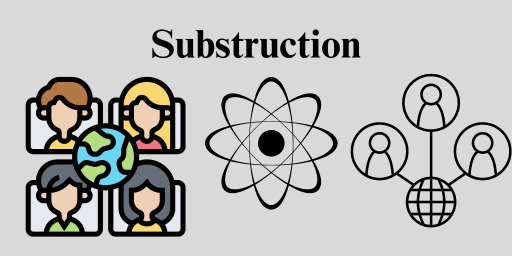Research Substruction in Health Substruction is a valuable heuristic technique utilized in healthcare research, aiding in planning new studies and critiquing existing ones. The method provides a structured approach to analyze and understand the conceptual and operational elements of research, offering a framework for developing new research projects or interpreting published studies. This article explores the definition, components, and processes of substruction, and the conceptual framework and series of questions related to the substruction process.
What is Substruction?
Substruction is a heuristic technique designed to assist researchers in the planning and critical evaluation of research studies. First introduced to the nursing research literature by Hinshaw (1979), substruction involves four steps:
- Identify and isolate major concepts.
- Specify relationships among these concepts.
- Hierarchically order the concepts based on their level of abstraction.
- Present the relationships among variables in a pictorial format.
Substruction allows researchers to systematically break down complex research topics into manageable parts, providing a clearer understanding of the theoretical underpinnings and practical applications of a study.
Components of Substruction
Substruction comprises two main components: the theoretical system and the operational system.
- Theoretical System: This system explains the relationship between constructs and concepts by articulating postulates or statements of relationships. For example, the construct of “quality of life” might include three dimensions or concepts: physical, social, and spiritual well-being. The theoretical system moves from a high level of abstraction (constructs) to less abstract notions (concepts). It’s important to note that while some authors may use the terms “constructs” and “concepts” interchangeably, in substruction, they represent different levels of abstraction.
- Operational System: This component, added by Dulock and Holzemer (1991), links each concept identified in the theoretical system to an empirical indicator or measure. The operational system is crucial for identifying how constructs are measured in a study and ensures that every variable is accurately represented and quantified.
Conceptual Framework
The conceptual framework within substruction examines both vertical and horizontal relationships among constructs and concepts:
- Vertical Relationships: These relationships involve moving from more abstract constructs to less abstract concepts, thereby clarifying the hierarchy and levels of abstraction.
- Horizontal Relationships: These are examined through axioms (statements linking constructs) and propositions (statements linking concepts). For instance, an investigator might hypothesize an inverse relationship between the “severity of illness” and “quality of life.” The axiom may state that as the severity of illness increases, the quality of life decreases.
The conceptual framework helps researchers articulate and clarify the theoretical assumptions and hypotheses underlying a study.
Process of Substruction
The process of substruction involves several steps to ensure the accuracy and validity of research:
- Identifying Measures: The operational system requires researchers to identify and link each concept with an empirical measure or indicator. This step is vital for understanding how constructs are operationalized within a study.
- Ensuring Validity and Reliability: Identifying measures helps researchers focus on the validity and reliability of each selected measure, ensuring confidence in the study’s results.
- Review of Empirical Indicators: Reviewing empirical indicators allows for a thorough analysis of the measures’ scaling level, ensuring that the appropriate statistical analysis techniques are applied.
- Labeling Scores: Proper labeling of scores as continuous or discrete is essential for determining whether parametric or nonparametric analyses are appropriate for the study.
Series of Questions Related to the Substruction Process
Dulock and Holzemer (1991) developed a series of questions to guide researchers when planning or critiquing studies using substruction. These questions help ensure that all aspects of the study are thoroughly considered:
- What is the evidence supporting the relationships between constructs and concepts?
- Researchers must provide evidence that justifies the theoretical relationships proposed in the study.
- How does the study propose to measure each identified concept?
- This question ensures that there is a clear plan for quantifying each concept.
- Is there evidence of the validity and reliability of the measures?
- Validity and reliability are crucial for ensuring that the measures accurately reflect the constructs they are intended to measure.
- What level of measurement will result from these instruments?
- This determines the type of data analysis that will be appropriate for the study.
- Are the data analysis techniques appropriate for these measures?
- Researchers must ensure that the chosen data analysis methods align with the type of data collected.
- Is there a logical consistency between the theoretical system and the operational system?
- The theoretical system must align logically with the operational system to ensure the study’s overall coherence.
Conclusion
Substruction is a powerful tool for researchers in healthcare, particularly in nursing research. It helps researchers systematically break down and analyze the components of a study, ensuring logical consistency between the theoretical and operational aspects. This approach aids in developing new research projects and critically analyzing published studies. By focusing on the relationships between constructs and concepts, substruction enables researchers to understand better the underlying framework of their studies and ensures that all variables are accurately represented and measured. As a heuristic technique, substruction facilitates a deeper comprehension of complex research topics, fostering robust and reliable research outcomes in healthcare.
